GDFCF supports the work of Costa Rican scientists and their research on iconic species that call ACG home, including migrating tropical birds and resident species.
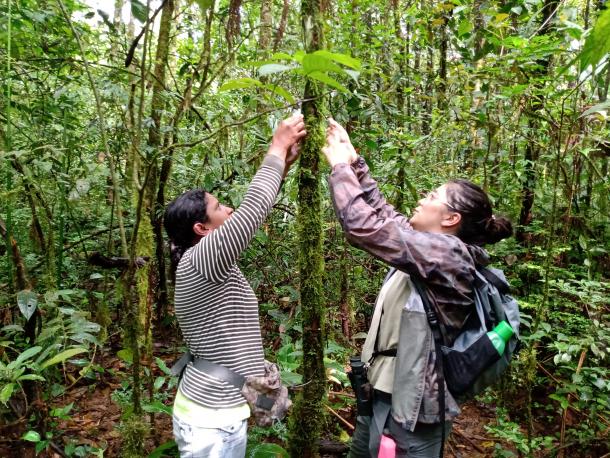
Isabel Vargas (right), part of the BioAve team, and parataxonomist Ana Cordoba (left) install a bioacoustic monitor near Estación Leiva (photo by Daney Chavarría).
Bird surveys of ACG have documented 576 species of birds, with over 300 species living in the 200- to 1,200-meter mid-elevation sweep of Caribbean rain forest within Sector Rincón Rain Forest. At least 62 northern migrant bird species live or pass through this habitat during their non-breeding season. These mid-elevation Caribbean rain forests may, in fact, hold among the largest arrays of bird species within all of Costa Rica, but the lack of this type of rain forest – due to their suitability and conversion to coffee plantations and other forms of crop agriculture – means their use by neotropical migrant birds has not been well studied or understood. Beginning in 2017, GDFCF initiated a migratory bird research program, dubbed BioAve, to understand habitat usage and overall frequency and abundance of migratory birds in ACG's mid-elevation Caribbean rain forest during their non-breeding season. We are fortunate to have support from the U.S. Fish and Wildlife Service’s Neotropical Migratory Bird Program, the Conservation, Food & Health Foundation, and other individual donors.
The project’s focal species is the Wood Thrush (Hylocichla mustelina) and other neotropical migrants such as wood warblers and other thrushes with which the Wood Thrush is associated. The project involves detection and monitoring of Wood Thrush, and the identification of food sources via diet analysis that utilizes DNA metabarcoding and related bioinformatics. A key component of this project is the training of resident parataxonomists to conduct regular monitoring during the non-breeding season; a task that adds to their already-prodigious knowledge of insects and enables them to be part of the growing interest in bird research and ecotourism in this region. BioAve, which is led by Dr. Natalie Sánchez, also conducts research to understand migratory bird distribution in ACG by placing bioacoustic recorders that record bird songs in locations throughout ACG. As of 2021, the bioacoustic monitoring is complemented by two MOTUS towers inside ACG. MOTUS are automated receiver towers with directional antennas that scan the skies for specialized radio signals from birds outfitted with a transmitting “nanotag.” The MOTUS system allows researchers to track small, migratory animals such as songbirds, shorebirds, bats, and even certain large insects. In 2023, the BioAve team began nanotagging migratory birds in Costa Rica, to enable tracking of their migration to the northern hemisphere since most nanotagging is done in the U.S. and Canada for birds flying south, and the transmitter batteries typically die before the birds return north many months later. You can follow our MOTUS station detections here and here. Other components of the BioAve program include bird banding and the collection of breast feathers for the DNA analysis of all Costa Rican birds (which has never been done).
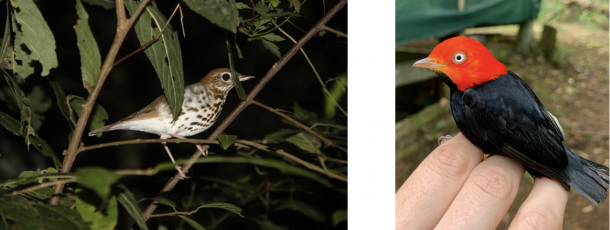
An ACG migrant and a resident: A Wood Thrush, left, and a male Red-capped Manakin, right
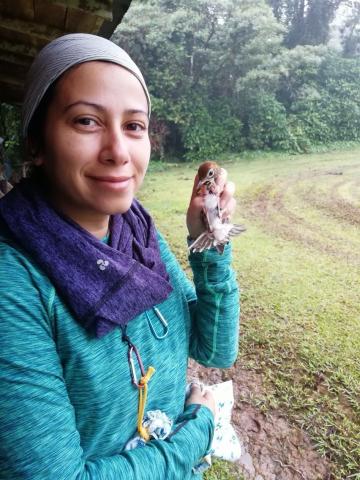
Dr. Natalie Sánchez, the BioAve project lead, prepares to release a Wood Thrush. Photo by Kathy Bonilla.
In 2023, GDFCF broadened its bird research program to support the work of Ignacio Gutiérrez, a master’s degree student at the University of Costa Rica, who is studying the critically endangered yellow-naped parrot (Amazona auropalliata). His research is focused on identifying the distribution of parrot nests in northern Guanacaste, as well as learning what makes a nest successful. ACG hosts one of the largest populations of these parrots, which have seen declining populations in the greater Mesoamerica region due to habitat loss and the illegal poaching of young parrots for the pet trade.
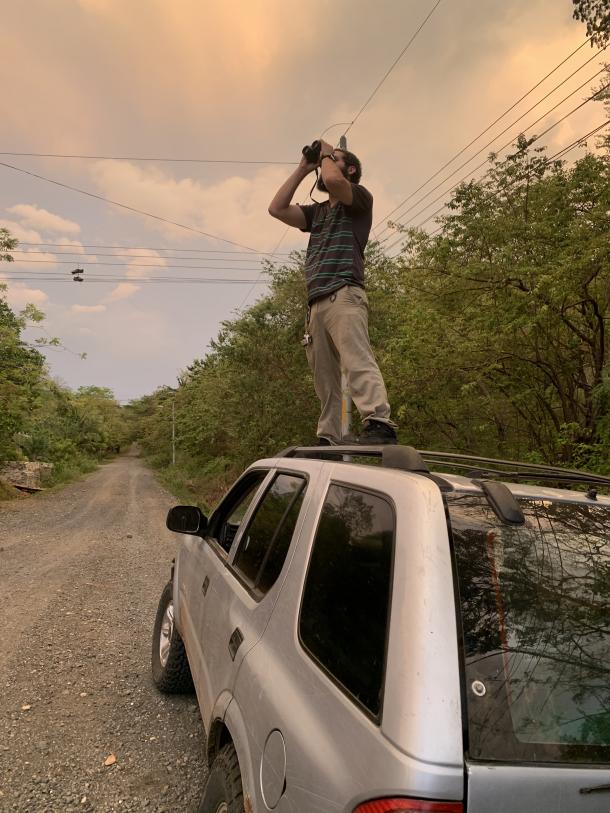
Ignacio Gutiérrez counts yellow-naped parrots as they fly to a roosting site near ACG. Photo by Monique Gilbert.
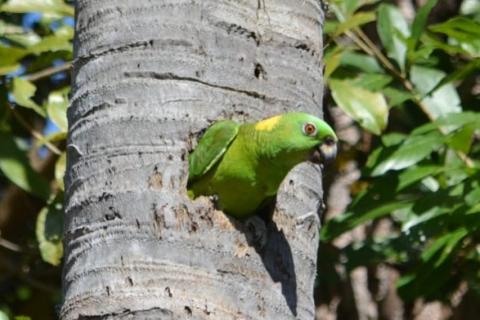
An adult yellow-naped parrot in its nest. Photo by Melanie Mata.